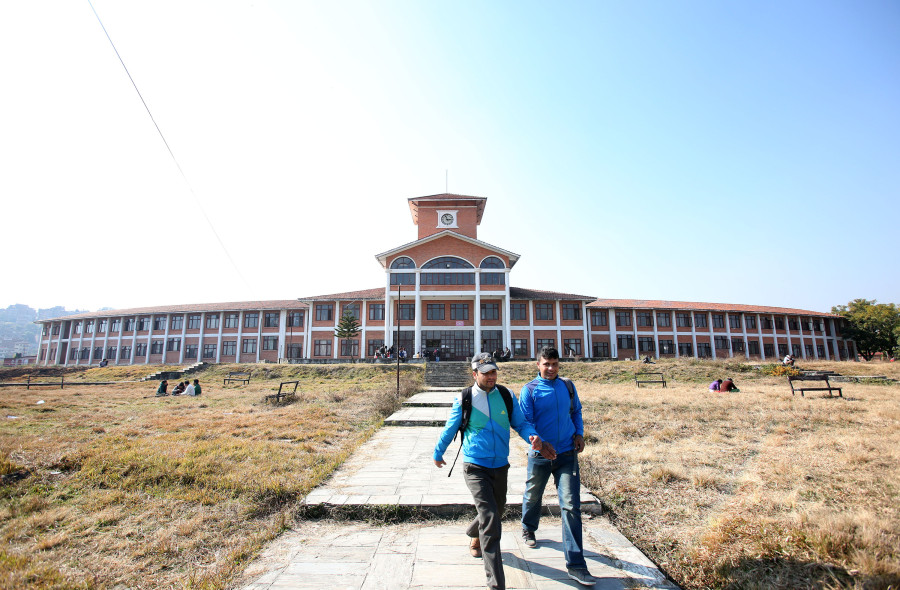Columns
Universities: The size debate
Small universities with focused teaching and research agenda are likely to be more successful.
Pratyoush Onta
In Nepal, we suffer from the myth that all universities need to be “comprehensive”, and therefore, big in terms of student enrolment. While there seem to be many definitions of what a comprehensive university means, many seem to agree that it is an institution that offers degrees to undergraduate and graduate students in many disciplines in the humanities, social sciences and natural sciences. Some would even add that such universities should also offer professional degrees in business, engineering, law and medicine. The “natural” corollary of such an imagination equals a comprehensive university with a large student body.
As in many other discussions related to universities, our imagination about university size is influenced by the historical reality of Tribhuvan University (TU). Propelled as the only teaching and affiliation-providing university in the country for several decades after its founding in 1959, TU had already become a mammoth comprehensive university by the early 1990s with 195 constituent and affiliated colleges located across the country. With the addition of many disciplines in the natural and social sciences as well as professional programmes in engineering and medicine, the size of its student body had grown to about 155,000 by 1992.
Ill management
The size of TU was considered a major obstacle to its smooth functioning that same year. The 1992 Report of the National Education Commission identified the mounting pressure from its increasing number of students as one of the main reasons behind TU’s ill management. In another study done in the early 1990s—Tertiary Education Project and one that was led and executed by TU’s own faculty members—it was recommended that TU be decentralised for real. This suggestion was also reiterated in the First Higher Education Project funded by the World Bank which started in 1994. However, the main option for decentralisation that was explored—regional clustering of TU’s colleges leading into spun off autonomous universities—was considered a failure and abandoned in 1999.
Currently, TU is described as one of the biggest universities in the world with more than 450,000 students enrolled in more than 1,100 colleges. As can be expected, the challenges facing TU have increased enormously in the past 30 years as the ability of its management has been long outmatched by the size of the much increased student body spatially distributed all over the country. While it is obvious that reforming TU would require its serious downsizing, those in charge in recent years have never honestly acknowledged this point. Instead, for them, this enormous size has become an issue of celebration as done by one former vice-chancellor of TU—Hira Bahadur Maharjan—in a piece he co-wrote in this newspaper recently (“On the right track”, December 6, 2022). In an interview we did with him in 2015 when he was the vice-chancellor, Maharjan told us that TU’s size was something “we should be proud of”.
This big size obsession has obfuscated the debate we should be having about the size of proposed new universities in loktantrik Nepal. While participating in these discussions, I often hear the term “comprehensive university” being thrown around by other participants. These proponents talk about having 15,000-25,000 students eventually in their new universities, and then say why that student size would require a 1,000-bigha campus to accommodate classrooms, student residences, administrative buildings and sports facilities.
A good beginning point for this debate would be to recognise that not all universities need to be comprehensive ones while some could be of this nature. Some universities can simply be excellent institutions for a select bunch of disciplines and make no pretension to be comprehensive universities. Many Nepalis are currently studying in such non-comprehensive universities in other countries. Moreover, it should also be recognised that even those universities that are “comprehensive” can come in various sizes. After all, the California Institute of Technology with 2,400 students, and the University of Pennsylvania with about 24,000 students are both comprehensive universities.
Having previously argued why Nepal needs more universities (my column, January 6), I want to now suggest that the new ones be mostly small universities, each with a few hundred to 3,000 students. Why?
First, we have not demonstrated much ability to run large modern institutions with great efficiency and at a high level of functional quality. Our record of running large public institutions is rather abysmal, and we might as well publicly recognise this as a collective failure for now. If we recognise this point, it would be logical to think that smaller institutions have a better chance of delivering both quality and efficiency although I acknowledge that there is no guarantee as such.
Second, all of the new universities that have been opened since the early 1990s have aimed to eventually become large institutions with many thousand students each. Given their sizes and associated budgets, they have become targets of capture by the major political parties for appointment of their cadres into major management positions. Big or small, we will need a commitment from all political parties to let universities operate autonomously at arm’s length. Small institutions with relatively smaller budgets will have relatively fewer opportunities for jobs for political cadres, and hence the pressure on their masters to capture such institutions might be less. In other words, smaller institutions might be more functionally autonomous if the political parties make a commitment to let these institutions run on their own.
Third, small universities are likely to have more manageable needs for land, buildings and other facilities. Given the legal complexities of obtaining public land to build a university in federal Nepal—where the ownership transfer of large tracts of land often requires the permission from all three tiers of government—smaller universities might be run in tracts of land that might be rented/leased from private owners or just one level of government (for example, a municipality or village council). The financial challenges of realising the needed buildings and other facilities for the smaller universities will also be more manageable.
Less distracted
Fourth, small universities with focused teaching and research agenda are likely to be more successful in meeting their students’ needs. For instance, a small university that focuses mostly on undergraduate teaching in the social sciences and humanities is likely to be less distracted by the influence of big money associated with business, medical or engineering schools. Because it is an undergraduate-focused institution, such a university is likely to hire faculty members who prioritise a commitment to teaching over research. Such an institution is likely to better serve the learning needs of its undergraduate students.
Or take an alternate example of a small university that prioritises research at the doctoral level. Organised along various thematic clusters with a total graduate student population of say 600-800 students, the faculty hired for this institution is likely to give research and research supervision a priority. Such an institution is likely to better serve the research needs of its doctoral students.
So can we have a higher education landscape in which the current universities continue to serve many thousand students each while the new ones will be mostly entities with small student body sizes? Some of these small universities could be comprehensive ones, if that pleases you.
But is anyone listening?




 15.12°C Kathmandu
15.12°C Kathmandu















